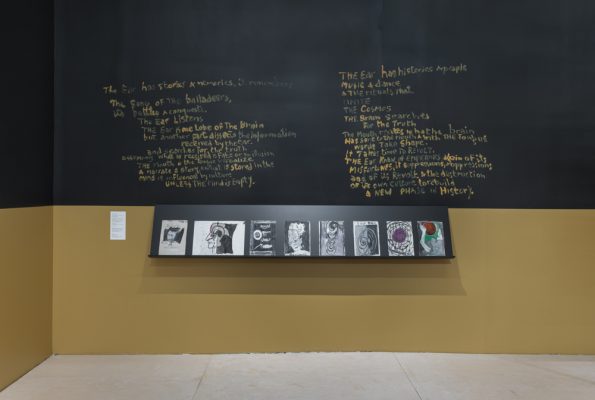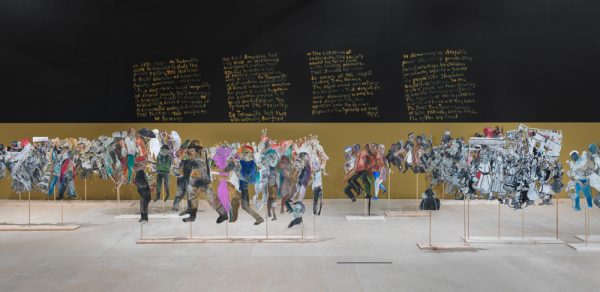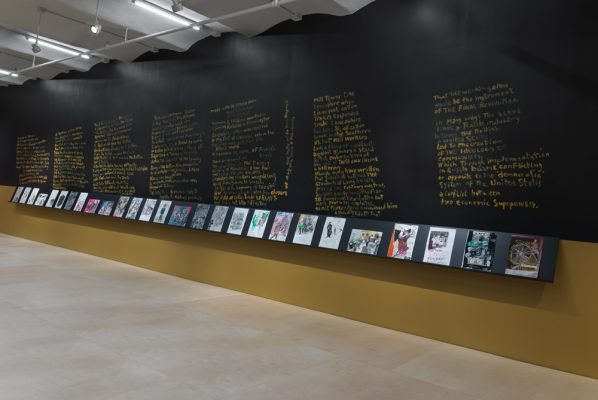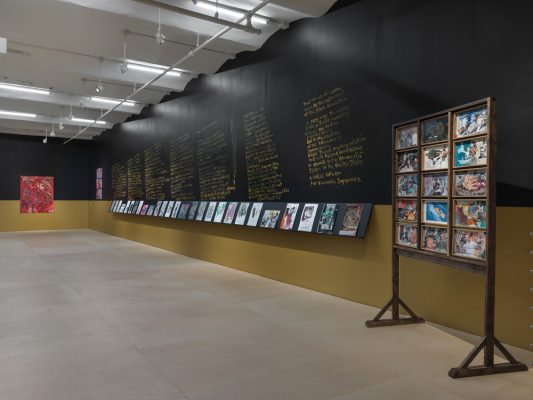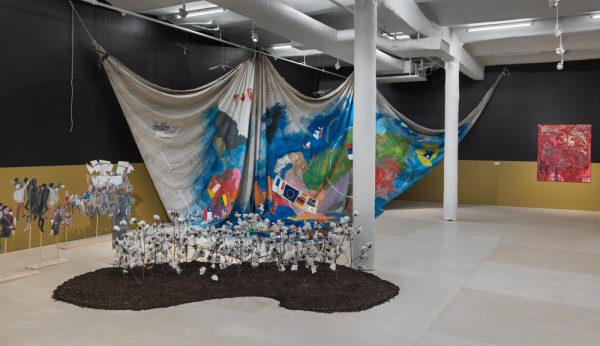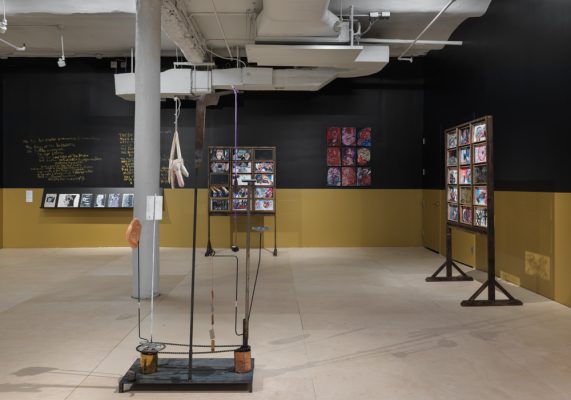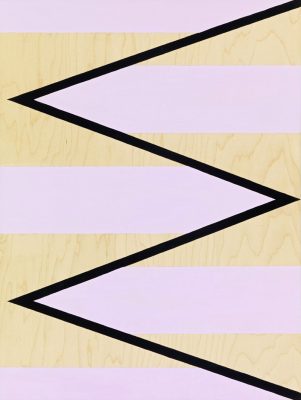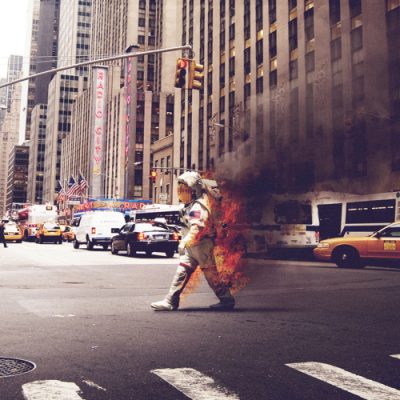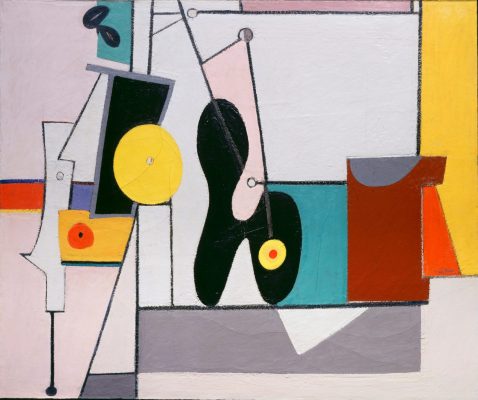Anna Boghiguian’s art has always been about a kind of looming: the hover of histories, their asphyxiating weft. Throughout her forty-year practice, the Cairo-born artist has consistently traced the struggles of civilisations by researching colonialism, labour, and philosophical thought to produce shambolic works that suggest a restlessness, a need to pick up and go. Boghiguian’s nomadic existence is integral to her artmaking, which is decidedly site-specific. (Critics like to point out the ‘portability’ of her work, as though her oeuvre were a sort of luggage.) She roams from country to country, often staging exhibitions that consider issues relating to the region she finds herself in. In ‘The Loom of History’ –bewilderingly her first major solo show in the US – she sticks with this approach, overwhelming visitors to the New Museum with cutouts, drawings, paintings, collages, and installations that chart the brutal evictions and exploitations of the cotton industry, to which we owe no less than the global capitalism of today.
In lieu of traditional wall text, Boghiguian has scrawled meditations and informative passages in yellow paint on black walls that resemble schoolroom chalkboards. They tell the origins of American slavery, of French aristocrat Alexis de Tocqueville’s trip to the US and his vision of democracy, of the Dutch West India Trade. These passages bear established interpretations, and so run the risk of appearing intellectually rote. (‘The history of the modern world changed completely with age of exploration,’ begins one paragraph.) But their blatancy is indicative of a deeper malaise that permeates Boghiguian’s work. More damnable than history, she suggests, is a willed deafness to it. Hence this exhibition’s auricular motif, the human ear, which features in visceral paintings, collages, and sculpture as an instruction to listen.
The neatness of these narratives and lessons is contrasted by the troupes of paper cutouts – not-quite-lifesize and scruffily painted with encaustic – that huddle in the centre of the gallery. Held in place by wooden sticks, these ancient Romans, rightwing protestors, enslaved cotton pickers, soldiers, and arriving immigrants bristle with aching life – the rhythms of harvesting cotton, the drudgery of factory toil, an anti-refugee protest’s rabid squirm. The puppets are staggered like set-pieces, some in the foreground and some in the background; it’s as though, upon entering the room, we’re cast into a whimsical, tormented drama. But no, that’s not the right metaphor – the cutouts are more like characters on a page: history as sordid pop-up book, one gladly unread, shut.
The ‘uncaringness’ that Boghiguian once described as pervading her work ought not be conflated with indifference. Her explorations of commodities propose a cosmopolitanism premised not on consumption, but on the need to bear witness to global strife and the connectedness of human plight. (Her contribution to the 14th Istanbul Biennial in 2015 was organised around the salt trade, and previous works touch on the silk market.) At the New Museum this politics is heavy-handedly evidenced in Sail (2017), the work that monopolises the gallery’s far right corner. A windless muslin sheet droops from the ceiling and serves as a support for an incomplete painting of the world affixed with small flags from various nations. Papier-mâché vultures loiter above, and stalks of actual cotton shoot up from earth heaped on the floor.
Elsewhere, twenty-seven pencil, watercolour, and gouache compositions illustrate the rise of the cotton trade, from Christopher Columbus and the Dutch West India Company to the Ottoman Empire’s creation of cotton industries in Egypt. Boghiguian is a vibrant draftsman, and her drawings – of slave auctions, factories run on child labour, American Indians facing displacement – range from slapdash to overly textual to densely packed. Sometimes stained or torn from notebooks, the works’ deliberate amateur aesthetic lends the past a brittle urgency. A black-and-white watercolour of what appears to be enslaved Africans shackled during a transatlantic abduction could also allude to the US’s carceral state. A depiction of cotton pickers almost spills into abstraction, the bodies reduced to inky silhouettes amid a white field. Step back and the work, tinged at the edges with aqua and scarlet, is a grimy bloom of red, white, and blue.
We’re told that History is written by the victors, that the losers bear its brunt. At times one yearns for Boghiguian to reckon with this maxim more directly by accommodating more voices, whether they be her own or those of the sufferers she evokes. Additionally, the works’ conflicting scales trap the project between fully realised environment and a gallery show of more modest ambition. Maybe Boghiguian addressed this unruliness when she framed her work in a recent interview with Mousse: ‘I’d like to keep the chaos as much as chaos.’ Here is your world, her work seems to say. It is up to you to listen, and to care.
